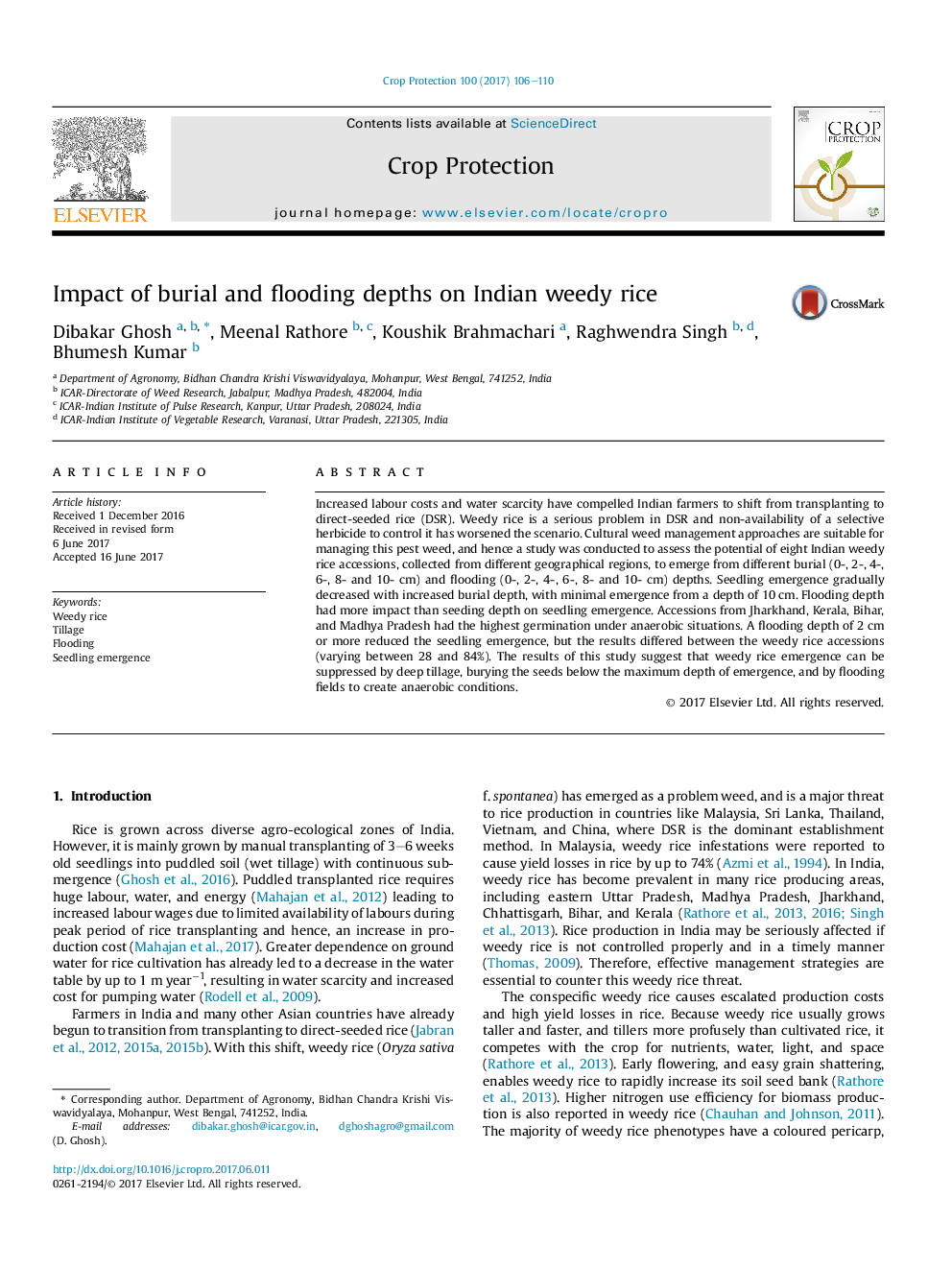| کد مقاله | کد نشریه | سال انتشار | مقاله انگلیسی | نسخه تمام متن |
|---|---|---|---|---|
| 5760817 | 1624287 | 2017 | 5 صفحه PDF | دانلود رایگان |
عنوان انگلیسی مقاله ISI
Impact of burial and flooding depths on Indian weedy rice
ترجمه فارسی عنوان
تاثیر عمق دفن و سیلاب برنج هند
دانلود مقاله + سفارش ترجمه
دانلود مقاله ISI انگلیسی
رایگان برای ایرانیان
کلمات کلیدی
برنج علفی، کشت و زرع، سیلاب، ظهور نهال،
موضوعات مرتبط
علوم زیستی و بیوفناوری
علوم کشاورزی و بیولوژیک
علوم زراعت و اصلاح نباتات
چکیده انگلیسی
Increased labour costs and water scarcity have compelled Indian farmers to shift from transplanting to direct-seeded rice (DSR). Weedy rice is a serious problem in DSR and non-availability of a selective herbicide to control it has worsened the scenario. Cultural weed management approaches are suitable for managing this pest weed, and hence a study was conducted to assess the potential of eight Indian weedy rice accessions, collected from different geographical regions, to emerge from different burial (0-, 2-, 4-, 6-, 8- and 10- cm) and flooding (0-, 2-, 4-, 6-, 8- and 10- cm) depths. Seedling emergence gradually decreased with increased burial depth, with minimal emergence from a depth of 10Â cm. Flooding depth had more impact than seeding depth on seedling emergence. Accessions from Jharkhand, Kerala, Bihar, and Madhya Pradesh had the highest germination under anaerobic situations. A flooding depth of 2Â cm or more reduced the seedling emergence, but the results differed between the weedy rice accessions (varying between 28 and 84%). The results of this study suggest that weedy rice emergence can be suppressed by deep tillage, burying the seeds below the maximum depth of emergence, and by flooding fields to create anaerobic conditions.
ناشر
Database: Elsevier - ScienceDirect (ساینس دایرکت)
Journal: Crop Protection - Volume 100, October 2017, Pages 106-110
Journal: Crop Protection - Volume 100, October 2017, Pages 106-110
نویسندگان
Dibakar Ghosh, Meenal Rathore, Koushik Brahmachari, Raghwendra Singh, Bhumesh Kumar,
